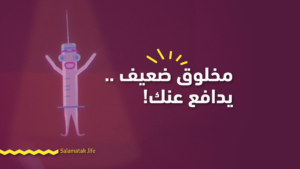
Salamatak – Strokes
Background and Geographical Distribution
In the United States, approximately 750,000 strokes happen each year, most of which are caused by a blockage in a blood vessel. Strokes can cause long-lasting disability or even death. However, early treatment and preventive measures can reduce the brain damage that occurs because of stroke.
The symptoms of a stroke usually begin suddenly but sometimes develop over hours or days, depending upon the type of stroke. In both ischemic and hemorrhagic stroke, one or more areas of the brain can be damaged. Depending upon the area affected, a person may lose the ability to move one side of the body, the ability to speak, or a number of other functions.
The damage from a stroke may be temporary or permanent. A person’s long term outcome depends upon how much of the brain is damaged, how quickly treatment begins, and several other factors.
Screening and Diagnosis
There are a number of risk factors for strokes; some of these factors increase the risk of one type of stroke (hemorrhagic or ischemic), while others increase the risk of both types.
Ischemic stroke risk factors include the following:
– Age older than 40 years
– Heart disease
– High blood pressure
– Smoking
– Diabetes
– High blood cholesterol levels
– Illegal drug use
– Recent childbirth
– Previous history of transient ischemic attack
– Inactive lifestyle and lack of exercise
– Obesity
– Current or past history of blood clots
– Family history of cardiac disease and/or stroke
Hemorrhagic stroke risk factors include the following:
– High blood pressure
– Smoking
– Illegal drug use (especially cocaine and “crystal meth”)
– Use of warfarin or other blood thinning medicines
Occasionally, strokes occur in people who have no risk factors, which could be due to other conditions the patient has such as aneurysms (weakness in a blood vessel wall) or due to some medications that increase the risk of blood clots.
Knowing the signs and symptoms of a stroke can be lifesaving. Classic stroke symptoms can be recalled with the acronym FAST. Each letter in the word stands for one of the things you should watch for:
– Face – Sudden weakness or droopiness of the face, or problems with vision
– Arm – Sudden weakness or numbness of one or both arms
– Speech – Difficulty speaking, slurred speech, or garbled speech
– Time – Time is very important in stroke treatment. The sooner treatment begins, the better the chances are for recovery. Therefore, call an ambulance (dial 997 in Saudi, 998 in UAE, 9999 in Oman, 112 in Kuwait, and 999 in Bahrain and Qatar) right away.
Blood tests and brain imaging — After doing a physical exam and reviewing the patient’s history, the doctor or nurse usually orders blood tests and an imaging test (eg, CT scan or MRI scan) of the brain and the surrounding blood vessels in the neck and head that supply the brain with blood. The imaging allows the doctor or nurse to see the area of the brain affected by the stroke, as well as to confirm the type of stroke (ischemic or hemorrhagic).
Treatment and Prevention
Hemorrhagic Stroke — the treatment and prevention of a hemorrhagic stroke depends upon the cause of the bleeding (eg, high blood pressure, use of anticoagulant medications, head trauma, blood vessel malformation). Most patients are monitored closely in an intensive care unit during and after a hemorrhagic stroke. The initial care of a person with hemorrhagic stroke includes several components:
– Determining the cause of the bleeding.
– Controlling the blood pressure.
– Stopping any medication that could increase bleeding (eg, warfarin, aspirin).
– Measuring and controlling the pressure within the brain.
Surgical treatment — A surgical procedure may be recommended to prevent or stop bleeding or reduce the pressure inside the skull. Depending upon the stroke severity and the patient’s condition, surgery may be done within the first 48 to 72 hours after the hemorrhage, or it may be delayed until one to two weeks later to allow the patient’s condition to stabilize.
Aneurysm treatment — An aneurysm is a blood vessel that has a weak area that balloons out. If the area ruptures and bleeds, a hemorrhagic stroke can occur.
A clamp can be placed at the base of the aneurysm to prevent bleeding before a stroke or to prevent re-bleeding. This surgery requires removing a piece of the skull and locating the aneurysm within the brain tissue. This procedure is done after the patient is given general anesthesia, and often requires several hours to complete.
OTHER EARLY TREATMENTS
The medicines used for the early treatment of ischemic stroke are aspirin and anticoagulants.
Aspirin is the only antiplatelet agent that has been established as effective for the early treatment of acute ischemic stroke. Thus, doctors may use early aspirin therapy (within 48 hours of the start of stroke symptoms) for patients with ischemic stroke who are not receiving anticoagulants.
Watch More


Salamatak – Osteoporosis

Salamatak – Hollywood Smile

Salamatak – Children’s Safety

Salamatak – Fastest Way to Lose Weight

Salamatak – Seasonal Flu Vaccine

Salamatak – Aids

Salamatak – First Aid

Salamatak – The Musculoskeletal System

Salamatak – Organ Donation

Salamatak – Early Detection

Salamatak – Seniors
Sharing is Caring
Salamatak is an awareness program with an authentic Arab spirit that provides health advice and guidance in line with the standards of international health awareness organizations. It aims to elevate society through health and safety awareness in a spontaneous way, and targets healthy people in particular and society in general.
© 2020 All rights reserved – Salamatak
